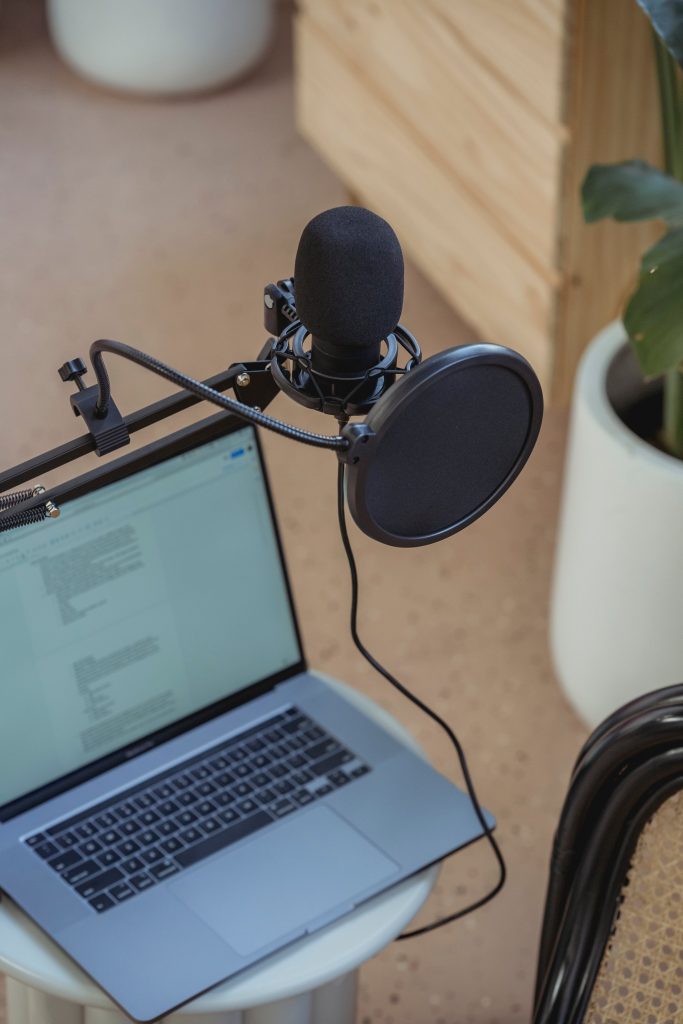5 Powerful Tools to Transform Your Online Radio Station

Table of Contents

Embarking on Your Online Radio Journey: The Essential Toolkit
Launching an online radio station is an exciting adventure in today’s digital era. It’s a unique opportunity to broadcast diverse content and connect with audiences far and wide.
Radio broadcasting is no longer reserved for big corporations and famous names. With the advent of internet radio streaming, more and more people have access to audiences that just 20 years ago would have been unthinkable.
The key to a successful online radio station lies not just in creating fascinating content or employing engaging personalities. It’s equally about the technical backbone that supports and enhances the broadcast quality.
In this guide, we’ll uncover five pivotal tools that are critical for anyone stepping into the world of online radio broadcasting. These tools are designed to make your life easier and to significantly boost the quality and reach of your station.
These tools will play a crucial role in shaping your station’s future, so read on!
1. High-Quality Broadcasting Software: The Heart of Your Station
In digital broadcasting, your choice of broadcasting software can make or break your online radio station. This software is the central hub for streaming your content, managing live broadcasts, and ensuring that your station operates smoothly. Here’s a deeper look into the types of software you might need and resources to find the best fit for your station.
Types of Broadcasting Software
Automation Software: This is essential for scheduling tracks, managing playlists, and automating your broadcast. It’s like having a virtual DJ that keeps your station running 24/7.
Live Broadcasting Software: For live shows, you need software that can handle real-time audio processing and mixing. It should be compatible with various audio sources and microphones.
Encoder Software: Encoders convert your audio into a streamable format.
Audio Processing Tools: These are used for improving sound quality. Features like equalizers, compressors, and limiters are key to delivering professional-grade audio.
Listener Analytics Tools: Understanding your audience is crucial. Software that provides real-time listener statistics helps tailor your content to audience preferences.
Selecting the Right Software
When choosing broadcasting software, consider your station’s specific needs:
Ease of Use: If you’re new to broadcasting, look for software with an intuitive interface and straightforward setup.
Compatibility: Ensure the software is compatible with your operating system and other tools you use.
Features: Identify key features you need, such as support for multiple audio formats, live streaming capabilities, and listener analytics.
Budget: Factor in your budget. There are excellent free and paid options available, so choose one that offers the best value for your investment.
Remember, the right software is an investment in your station’s quality and success. By leveraging these tools effectively, you can enhance your broadcast quality, engage more listeners, and run your station more efficiently.

2. Robust Content Management System (CMS): Streamline Your Online Radio Station
A Content Management System (CMS) is indispensable for effectively organizing and managing the myriad aspects of your online radio station. A CMS simplifies the handling of content, schedules, and interactions with your audience. This section explores what makes a good CMS and where to find the best options for your radio station.
Key Features of a Good CMS:
- User-Friendly Interface: The CMS should be intuitive and easy to navigate, allowing you to manage content without needing extensive technical knowledge.
- Media Management: It should efficiently handle various media types, including music files, podcasts, interviews, and advertisements.
- Scheduling and Automation: A good CMS offers features for scheduling shows, automations for repeating segments, and tools for managing live broadcasts.
- Integration Capabilities: Look for a CMS that integrates well with broadcasting software, social media platforms, and analytics tools.
- Customization: The ability to customize the CMS to suit your station’s brand and listener experience is crucial.
Finding the Right CMS for Your Station:
Researching and selecting the right CMS is a crucial step. Consider the following resources for finding and comparing CMS options:
- Capterra or G2 Crowd: These websites offer comprehensive lists and reviews of various CMS platforms, allowing you to compare features, pricing, and user reviews.
- Online Radio Forums: These can provide real-world feedback and recommendations from other radio station operators.
- Tech Blogs and Digital Magazines: Websites like TechCrunch or Wired often review and compare different tech solutions, including CMS platforms.
Selecting Your CMS:
When choosing a CMS, consider the following:
- Assess Your Needs: Understand what you need from a CMS – whether it’s more on media management, scheduling, or user engagement.
- Scalability: Ensure the CMS can grow with your station, accommodating more content and listeners as you expand.
- Support and Training: Check the level of customer support and training materials available, ensuring you can get help when needed.
- Cost: Factor in your budget, considering both upfront costs and any ongoing fees for updates or support.
A robust CMS enhances the listener experience by ensuring seamless access to diverse content. The right CMS will be a powerful ally in your broadcasting career, allowing you to focus more on creating great content and less on managing technicalities.
3. Analytics and Reporting Tools: Understanding Your Audience
In the world of online radio broadcasting, understanding your audience is key to growth and success. This section discusses the importance of analytics and reporting tools and outlines some of the best options available to help you gain insights into your listener base.
- Real-Time Listener Statistics: Tools that offer real-time analytics provide immediate feedback on how many people are tuning in, where they are listening from, and how long they stay engaged. This information is invaluable for tailoring your content to the preferences of your audience.
- Listener Demographics: Understanding the demographics of your audience, such as age, gender, and location, can help you create more targeted and relevant content. This data also proves useful when seeking sponsorships or advertisements, as it gives potential partners a clear picture of who they will be reaching.
- Engagement Metrics: Tracking which shows or segments have the highest engagement rates (such as likes, shares, and comments) can guide you in creating more of what your audience loves.
- Custom Reporting: Look for tools that allow you to customize reports to focus on the metrics most important to your station. This can include peak listening times, device types used for listening, and other specific data points.
Top Tools for Analytics and Reporting:
- Google Analytics: While typically used for website analytics, Google Analytics can also be integrated with your online radio platform to track listener behavior and engagement.
- CastHost.net: Known for its user-friendly interface, CastHost offers detailed analytics for online radio stations, including listener trends, location data, and device usage.
- AWStats: This free tool provides basic analytics, such as listener counts and session durations, and is a good starting point for stations on a budget.
- TrakItAll: A radio-specific analytics tool that provides detailed insights into listener patterns and station performance.
- Castos: Offers podcast analytics that can be adapted for radio shows, focusing on episode downloads, listener locations, and device types.
When selecting analytics and reporting tools, consider the size of your audience and the specific insights you need to grow your station. Even the most basic analytics can provide a wealth of information to help you understand and connect with your audience more effectively.
4. Reliable Online Radio Streaming and Hosting with CastHost
When selecting a streaming and hosting service for your online radio station, it’s crucial to choose one that offers reliability, high-quality streaming, and comprehensive features. CastHost specializes in providing these services, making it an excellent choice for broadcasters. Here’s an in-depth look at what CastHost can offer your online radio station:
- High-Quality Audio Streaming:
- CastHost ensures top-quality audio streams, crucial for an immersive listening experience. This means your broadcasts will have clear, uninterrupted sound quality that can attract and retain listeners.
- Scalable Listener Capacity:
- The service caters to a range of listener capacities. Whether you’re starting small or expecting thousands of listeners, CastHost offers scalable solutions to meet your audience size without compromising on stream quality.
- Diverse Streaming Packages:
- CastHost provides various packages to suit different needs and budgets. From starter to unlimited plans, you can select a package that aligns with your station’s current requirements and upgrade as you grow.
- Advanced Detailed Reports:
- Understanding your audience is key to the success of your station. CastHost offers advanced reporting features, giving you insights into listener preferences, peak listening times, and geographical distribution. This data is invaluable for tailoring your content and marketing strategies.
- Unlimited Bandwidth:
- With CastHost, you don’t have to worry about exceeding bandwidth limits. Unlimited bandwidth ensures that your station can handle high listener traffic, particularly during peak hours or special broadcasts.
- Low Latency Streaming:
- CastHost’s low latency streaming means that your audio reaches your audience with minimal delay. This is especially important for live broadcasts, interactive shows, or events where real-time engagement is key.
- Secure Stream URL:
- Security is a priority, and CastHost’s secure stream URL service ensures that your content is broadcasted safely. This feature is crucial for protecting your station and your listeners’ privacy.
- Ease of Setup and Management:
- Starting and managing your internet radio station is made easy with CastHost. The platform offers a user-friendly interface, making it simple to schedule shows, manage content, and broadcast live or pre-recorded content.
- Robust Customer Support:
- CastHost provides dedicated support to assist with any inquiries or issues. This ensures that any technical challenges you face can be promptly addressed, keeping your station running smoothly.
5. Effective Audio Processing Tools: Ensuring Broadcast Excellence
For any online radio station, the clarity and quality of audio are paramount. This is where effective audio processing tools come into play. These tools are essential for enhancing the sound quality of your broadcasts, making them more appealing to your audience.
- Multiband Compressors: They balance the loudness of different frequency bands, ensuring a uniform and pleasing sound. This helps in making the broadcast sound good across various listening devices and environments.
- Equalizers: EQs are vital for tweaking frequency response and can be used to enhance the clarity and color of the audio, ensuring that your broadcasts have the right tonal balance.
- Noise Gates: These help in reducing background noise, ensuring that the listeners’ focus remains on the content without any distracting sounds.
- Limiters: Essential for preventing audio clipping and distortion, limiters ensure that the audio stays within a safe range, maintaining quality.
- Advanced Audio Effects: Including reverb, echo, and bass enhancement, these effects add depth and character to your broadcasts, making them more engaging and professional.
Incorporating these audio processing tools can significantly uplift the quality of your broadcasts, setting your online radio station apart in terms of audio excellence.
Summing Up
Establishing a successful online radio station hinges on the strategic use of five key tools: high-quality broadcasting software, a robust content management system, effective audio processing tools, comprehensive analytics and reporting, and a reliable streaming and hosting service like CastHost. Each tool plays a crucial role in enhancing the quality of your broadcasts, streamlining operations, understanding your audience, and ensuring a seamless listening experience. By leveraging these essential tools, your online radio station is well-equipped to captivate and grow its audience in the competitive digital landscape.
 Home
Home